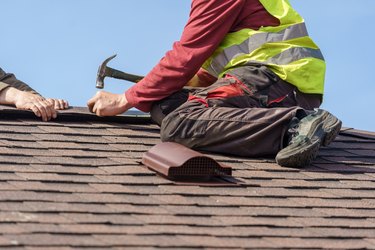How to Install Rolled Roofing
by siteadmin

Roll roofing is a great way to quickly and inexpensively cover your roof. It's also ideal for sheds, gazebos, and three-season rooms.
To install rolled roofing, start by measuring the surface you're covering and purchasing a piece of rolled roofing that matches. Then, cut it to size and attach it with nails or staples.
Layout
Rolled roofing is a low-cost alternative to traditional roof tiles. Its lightweight nature and low maintenance make it a popular choice for homeowners.
It is also a great option for people who want to save money and keep their home green. However, it is not as durable as shingles and should not be used on low-sloped roofs.
In order to install rolled roofing, start by laying down a starter course of roofing material. The upper edge of the starter course should be nailed in place with high nails that will overlap by at least one inch.
After you have nailed the first course, it is time to apply roofing cement. This will ensure that the entire surface is covered and will prevent leaks from forming.
Once the cement has been applied, you can begin to cut the rolled roofing to fit each section of your roof. This should be done over a chalk line so that you have a flat surface to work with.
Nails
There are several types of nails you can use to install rolled roofing. Some of them include smooth shank nails, spiral threads and square cap nails.
Roll roofing is often used for sheds, gazebos, patios, garages and other outdoor structures. It is one of the cheapest roof types available, but it needs to be installed correctly to ensure it will last for years to come.
Start by measuring the length of any valleys on your roof. Cut an 18-inch wide piece of rolled roofing and place it so that it straddles the valley.
Continue to apply each course of rolled roofing the same way as the previous one, using short nails spaced 6 inches apart and placed 1 inch from the outer edge.
Once the roof is covered, cover it with a liberal amount of roofing cement. Spread it over the first layer and lay a second sheet of rolled roofing over it.
Nail it down by hammering it into the separate layers. You can do this in 10-inch intervals across the roof. Don't lift your feet when nailing, but instead plant them on the rolled roofing as you hammer. This will stretch the material and make it easier to nail down.
Overlapping
Roll roofing is a low-pitch roof that works well for sheds, garages, gazebos, three-season rooms, and other functional structures. However, it isn't suitable for residential homes.
The first step to installing rolled roofing is to gather all the necessary tools and materials. Then, clean the roof thoroughly and make sure it is free of debris.
Measure the roof to determine where the first layer will go. Snap a chalk line across the roof to designate the lower edge of the second layer so it will overlap the first layer by at least 3 inches.
Once you have a chalk line drawn on the roof, nail the first course of rolled roofing into place using galvanized roofing nails and a hammer. Be sure to space the nails six to 10 inches apart and about one inch from the edges.
Then, roll out the next course of rolled roofing and overlap it by at least 4 inches. Be sure to cover the first layer with roofing cement before applying the second layer.
Cement
Cement is a substance that has adhesive properties and helps other materials stick together. It's commonly used in rolled roofing to help it adhere to the surface and to make it more secure.
The process of making cement starts with the extraction of limestone and clay. These raw materials are then processed in a kiln to make a fine cement.
When it's finished, the clinker is then added to a mix of water and aggregates to create concrete. The ratio of water to cement is what determines how strong the final product will be.
The most common type of cement is hydraulic cement, which sets and hardens in water. It's usually lime based, although some types of non-hydraulic cement also exist.
1714 Gilbertsville Rd, Pottstown, PA 19464
Roll roofing is a great way to quickly and inexpensively cover your roof. It's also ideal for sheds, gazebos, and three-season rooms. To install rolled roofing, start by measuring the surface you're covering and purchasing a piece of rolled roofing that matches. Then, cut it to size and attach it with nails or staples. Layout…
Recent Posts
- Hiring Roofing Contractors Corpus Christi, Texas
- Roofing Company Savannah Sheds Light on the Lifespan of Roofs: How Long Should a Roof Last?
- Choosing the Best Gutters for Your Jacksonville FL Home
- Choosing the Best Gutters for Your Chicago Home
- Exploring the Drawbacks of Duct Cleaning: Insights from Air Vent Cleaning Charlotte
